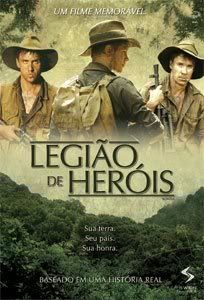Just a few comments, to challenge the growing mythology about Kokoda in Australia and, apparently, even reaching to Brazil. 
Kokoda wasn’t anywhere near the most significant campaign Australia fought in WWII, judged by size of units involved and military achievements, and failures. Those occurred in North Africa, the Middle East, Greece and Crete, well before Japan attacked.
Even in the war against Japan, Kokoda is somewhat overrated. It has iconic status in the popular Australian mind which represents the same sort of simple symbolism that the flag raising on Iwo Jima inspires in Americans when the most important battle they fought and won was in Guadalcanal a couple of years earlier, stopping the Japanese in concert with the Australians in Papua in late 1942 - early 1943.
Milne Bay was a more important Australian action militarily at the time as it denied the Japanese a flanking base to support their Kokoda movement and isolate the Americans on Guadalcanal. It was also the first time a Japanese landing force was defeated and repulsed, which was of huge psychological and morale significance after Japan’s endless victories to that point, and not just to Australian forces.
Kokoda was a courageously fought campaign in the retreat and the advance, by both sides, but once one gets past the local Australian commanders at about battalion to brigade level (some of whom weren’t too good) it was an absolute disgrace and shambles run by MacArthur and his deputy, the Australian Gen Blamey, both of whom failed to appreciate the conditions under which their troops were fighting; both of whom failed to supply their men adequately with everything, including medical assistance; neither of whom even bothered to fly over the awful ground their men were fighting on, let alone move to the front, while making impossible demands of their men and local commanders based on maps and personal ambition; and both of whom manouevred to make others the scapegoats for the failures their own deficiencies caused.
The measure of these leading idiots is that at American HQ there was a strong view that the Australians should block the Japanese at a pass in the Owen Stanleys. None of these idiots had even flown over it, so they didn’t realise that the “pass”, unlike an American cowboy movie, was so wide that a blocking move was impossible without deploying several divisions with usual divisional artillery etc and air support at least, when only a couple of independent infantry battalions were available.
What’s not understood in the popular and even a lot of supposedly serious treatments of the campaign is the role of the Australian artillery at the end of the Japanese advance and the start of the Japanese retreat, where some heroic efforts by gunners got their guns up where none thought they could go to support infantry, outgunning the Japanese for the first time in the campaign.
What’s also ignored in the popular mythology is that while the fabled 39th Bn did heroic work, the 53rd Bn was poorly led and pretty much ran at times. There are sound reasons for these differences, but the fact remains that in the early stages half of the Australian forces on Kokoda did a pretty poor job.
But in the end Gen Horii was ordered to retreat when almost in sight of Moresby, for operational reasons to do with Guadalcanal and higher Japanese operational and strategic requirements. Not that he and his exhausted troops at the end of their weak supply lines facing Australians at the start of theirs would have done more than been slaughtered if they’d stayed. The Japanese still put up a magnificent fight in retreat, mauling the advancing Australians.




